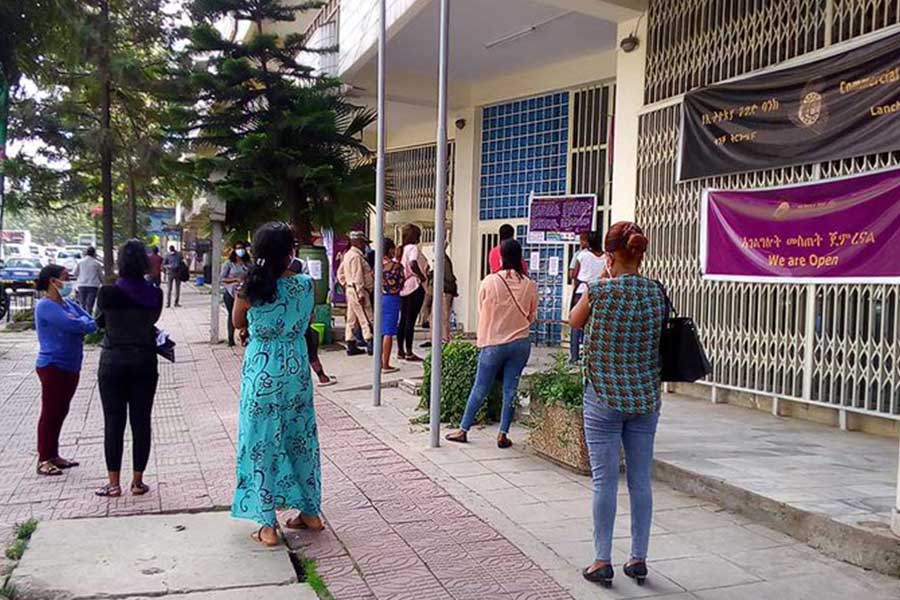
Nov 29 , 2020
By MAYA MISIKIR ( FORTUNE STAFF WRITER )
A new draft directive that outlines guidelines for setting and reviewing mini-grid electricity tariffs is making its way toward legalisation. Drafted by the Ethiopian Electric Authority, the directive is part of the Authority's latest law for the governance of off-grid electricity generation and distribution systems.
The directive, which sets the tariff for a period of four years, takes into consideration the ability and willingness of consumers to pay the tariff while ensuring that costs incurred by the developer and return on investment are considered.
The retail price for the use of the power generated by off-grid developers will encompass revenues for both generating and distributing the electric power with considerations to price predictions for four years of application time. It will include capital costs of developers, distribution asset costs, depreciation of the systems in use, customer service costs and taxation. It will, however, deduct any costs that have been subsidised by other bodies.
The tariff can be set based on consumption amount or as a flat rate. The developers are tasked with doing a survey and communicating with potential customers to come up with a tariff that will then be approved by the Authority.
The tariffs are set not to exceed national average tariffs for up to one kilowatt-hour of consumption a week in cases where it is subsidised. In the case where there are no subsidies, the retail price may be higher than national average tariffs.
This is a minimum threshold applicable to households that use the electricity just for lighting, according to Bahru Oljira, competency certification & technical regulation director at the Authority.
"This is a business venture, and mini-grid operators take on more costs due to the short-lived nature of their equipment, which raises the prices higher than for users of the national grid," he said. "The government may step in and subsidise the cost, in which case, it'll be beneficial to end-users."
Most beneficiaries of off-grid electricity systems are expected to be in rural areas where the National Grid System has not yet reached, according to Bahru.
The directive also lays the ground for cross-subsidisation, where substantial users of the grid system may subsidise costs for others given the intensity of their use. A good example would be industrial firms that may congest the lines due to heavy consumption.
The tariff, once set, will be in use for a period of four years, unless contested by either the consumers, developers or the regulator. While the review mechanism entails that 10 active or potential customers can petition for a review, the tariff revision request may take up to 60 days. It will include an application for revision, preliminary review and public hearing. It will commence with a tariff recommendation and approval following a post-preliminary review. If displeased with the result of the revision, petitioners will need to re-file a tariff application within the following 30 days.
The directive also outlines the quality of service and technical standards for off-grid electricity producers. Under the former, it limits the unplanned outage frequencies to be less than 96 times a year for hydro and wind, and less than 52 times a year for solar and other mini-grid electricity suppliers. The duration of the interruptions is also set to be less than 10pc of the annual intended service hours. Planned interruptions are not to exceed 12 instances and an outage duration of 5pc of the supply.
"The penalty for developers that overshoot this limit will be set with a regulation," said Bahru.
Licensees are compelled to generate at least 50pc of consumed energy annually from renewable energy, according to the directive.
Developers like Alphasol Modular Power Energy Plc, which has been working in off-grid electrification in the country for over 10 years, point to some bottlenecks that need to be attended to if the sector is to play an even bigger role.
The stringent parameters of microfinance institutions make it difficult for users to benefit from using off-grid electrification, according to Nebiyu Assefa, deputy CEO of the company.
"Higher production of power entails a higher cost for the community," he said. "Microfinance institutions need to be more flexible so that end-users access higher energy production. When power levels are low, they only serve as lanterns, and that doesn't significantly change the lives in the community."
The company has been providing solar water pumps and solar electrification for schools and homes in rural parts of the country, according to Nebiyu. While solar energy systems are exempt from taxes, accessories that benefit from it are not, like solar water pumps and televisions.
"This is not uniform and discourages the use of solar energy," he said.
There is currently 44pc electricity coverage with two licensed mini-grid operators, one wind and one solar-based, in the country. The federal government's National Electrification Programme aims to achieve full electricity coverage in the country by 2030, with nearly 35pc of the power expected to be provided by off-grid operators.
For some experts, this is regarded as a highly ambitious plan.
The scattered nature of settlements in the rural areas of the country and the high prices that come with off-grid electrification make this plan difficult to attain, especially photovoltaic (PV) ones, according to Wondowossen Bogale (PhD), associate professor at the School of Mechanical & Industrial Engineering at Addis Abeba University.
"Laying the cable connections by itself will be challenging in the current settings of inhabitants," he said. "The cost of the materials is also high, and the personnel who operate it are few."
Countries that have excelled at off-grid electrification have incentivised and supported engagement from the private sector, he explained.
"Though there are tax incentives for photovoltaic developers here, it requires more encouragement," he said.
Integrating various methods of off-grid electrification is the way to achieve sustainable electrification for the country, he added.
"Combining solar and wind power generation may bridge the gaps where one won't work," he said. "As most rural communities are engaged in agriculture, integrating biogas from agricultural waste will also prove beneficial."
The cost-effective nature of wind power should also be taken as an advantage and implemented in smaller scales, he advised.
PUBLISHED ON
Nov 29,2020 [ VOL
21 , NO
1074]

Radar | Jul 13,2020

Radar | Sep 08,2024

Viewpoints | Nov 27,2021

Letter To Editor | Mar 02,2019

Radar | Apr 03,2023

Fortune News | Jun 01,2019

Fortune News | Jun 20,2020

Fortune News | Sep 28,2019

Radar | Aug 22,2020

Radar | Dec 08,2024

Dec 22 , 2024 . By TIZITA SHEWAFERAW
Charged with transforming colossal state-owned enterprises into modern and competitiv...

Aug 18 , 2024 . By AKSAH ITALO
Although predictable Yonas Zerihun's job in the ride-hailing service is not immune to...

Jul 28 , 2024 . By TIZITA SHEWAFERAW
Unhabitual, perhaps too many, Samuel Gebreyohannes, 38, used to occasionally enjoy a couple of beers at breakfast. However, he recently swit...

Jul 13 , 2024 . By AKSAH ITALO
Investors who rely on tractors, trucks, and field vehicles for commuting, transporting commodities, and f...

Oct 11 , 2025
Ladislas Farago, a roving Associated Press (AP) correspondent, arrived in Ethiopia in...

Oct 4 , 2025
Eyob Tekalegn (PhD) had been in the Governor's chair for only weeks when, on Septembe...

Sep 27 , 2025
Four years into an experiment with “shock therapy” in education, the national moo...

Sep 20 , 2025
Getachew Reda's return to the national stage was always going to stir attention. Once...